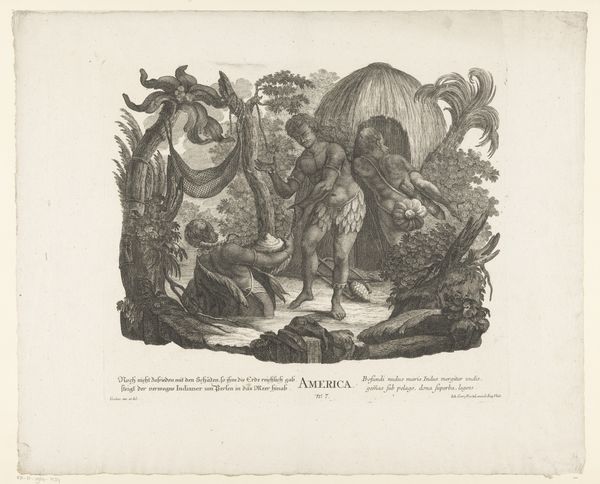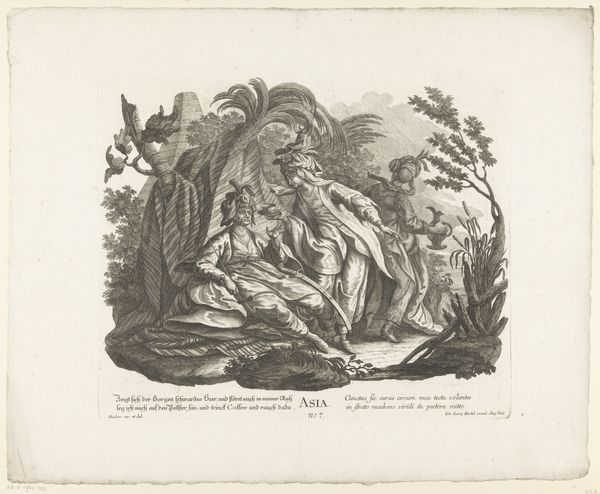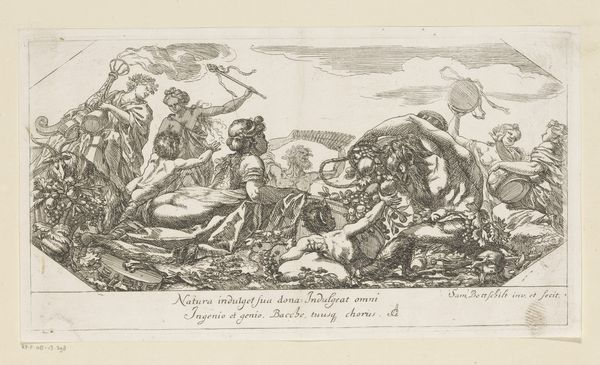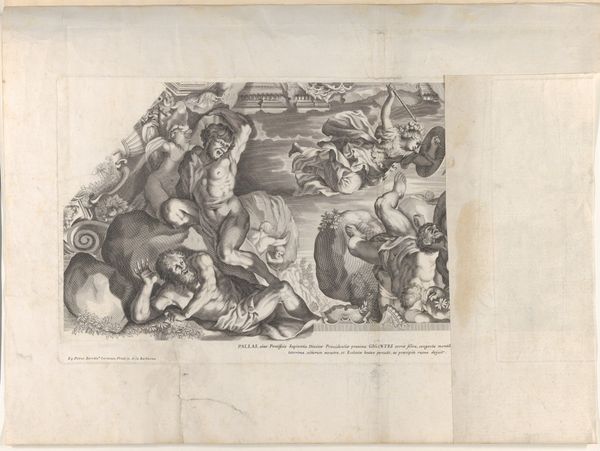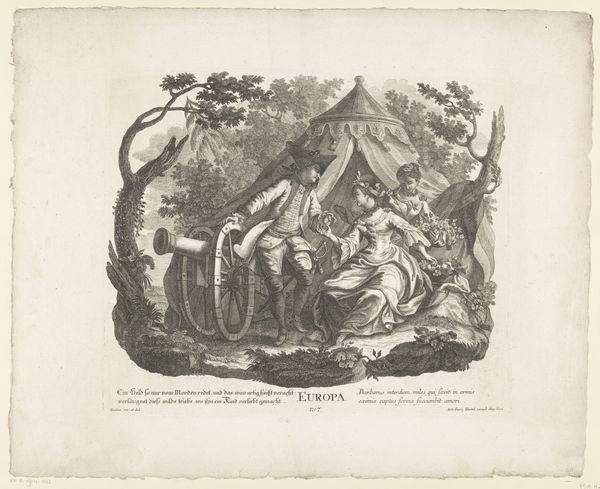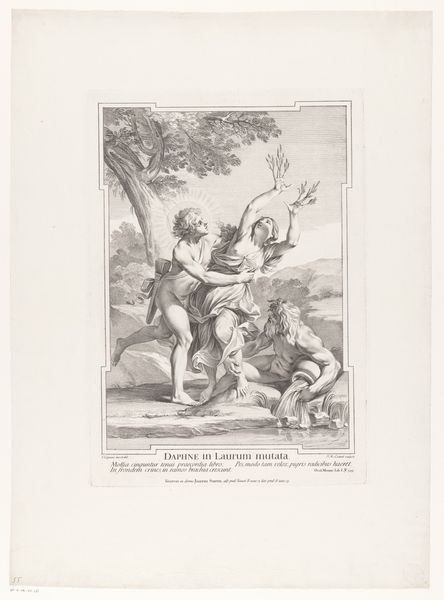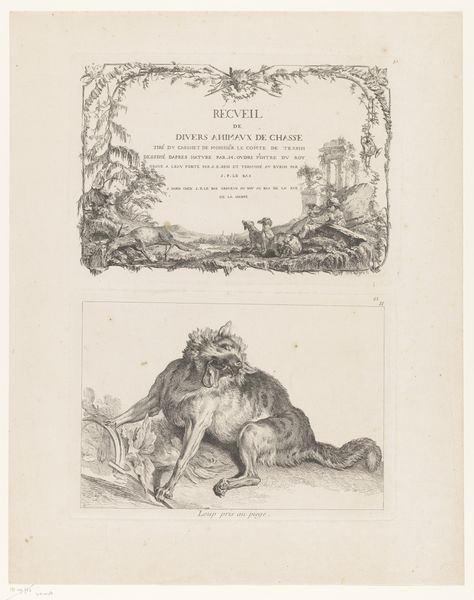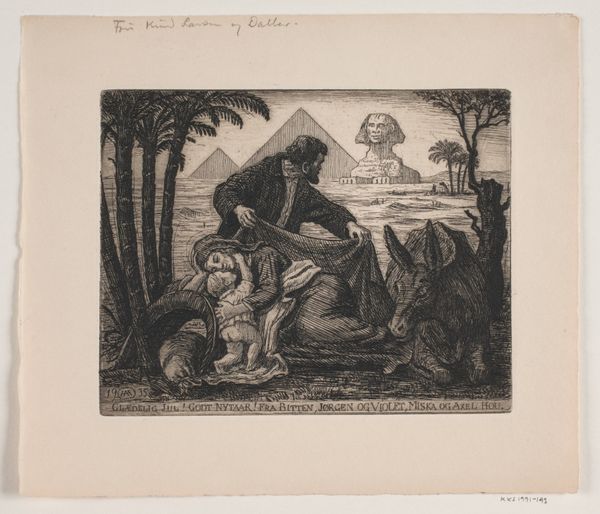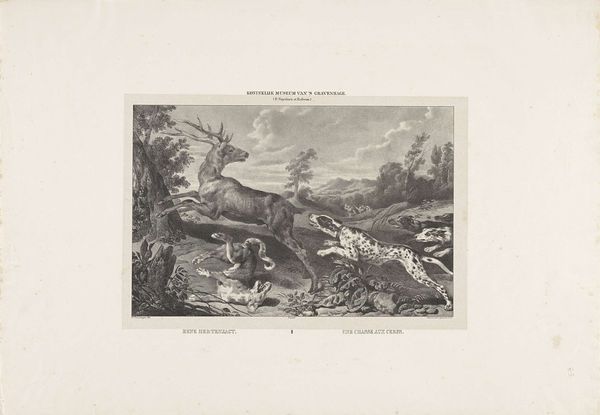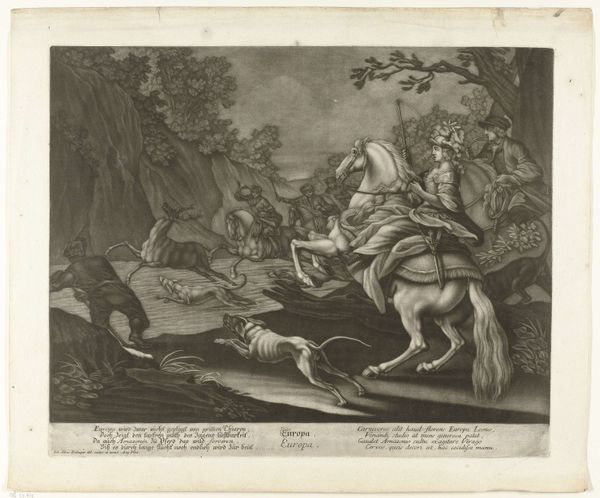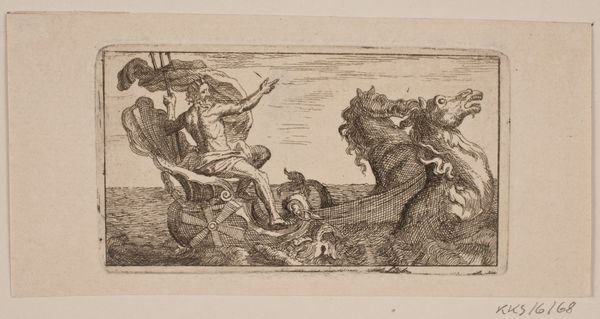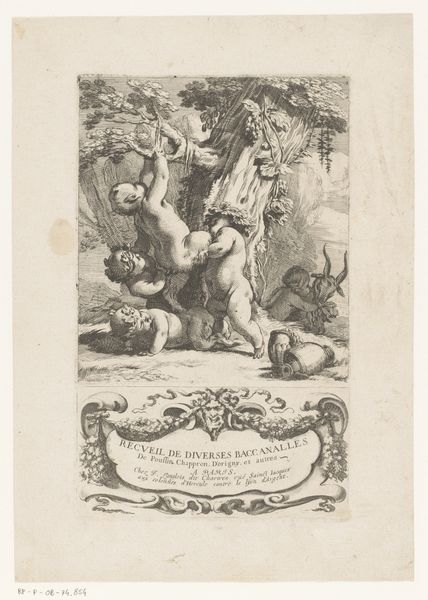
print, engraving
african-art
narrative-art
old engraving style
figuration
orientalism
genre-painting
history-painting
engraving
Dimensions: height 309 mm, width 367 mm
Copyright: Rijks Museum: Open Domain
Curator: Let's turn our attention to "Afrika," an engraving dating roughly from 1705 to 1775. It's currently held here at the Rijksmuseum and is by an anonymous artist. What's your initial reaction to it? Editor: Whoa, that's something! It's a real mix of power and… well, some serious colonial-era imaginings, shall we say? Very graphic—I mean, obviously, being an engraving! Dark lines, stark contrast. But the mood... yeah, heavy. Curator: Exactly. The process of engraving itself allows for a precise depiction, influencing how the subject—here, what appears to be a depiction of Africa through a European lens—is represented. The use of print, distributed widely, cemented certain perceptions. Editor: You're right. Think of all those consumers looking at it. It screams "otherness", doesn’t it? All that supposed "exotic" costuming... Even the landscape feels like a stage set for a narrative entirely created by someone who likely never set foot on the continent. What materials did they use exactly to create this narrative, beside ink and paper, or the plate that was used to print it? Curator: Copper was often used for the plates. The texture achieved relies on skill in carving the image directly into the metal—the lines create the shading and detail. The widespread use of printed images fueled demand, perpetuating biases that were reflected and reinforced. This engraving acted as a commodity. What ideas and views of other populations it sold. Editor: So, how much of this is actually 'Afrika', and how much is just a European fantasy slapped on some ink? It makes me think of modern-day Photoshop – altering perception by manipulation of images. In this case, carving on a metal plate. Makes me itch to do my own version! A 're-engraving', maybe, subverting the original. What are they trying to show, beyond otherness, civilization itself perhaps? The engraver's Africa feels really devoid of humanity in a way... like an element for an artificial creation of otherness. Curator: Yes! The Orientalist style is obvious here. The deliberate use of exaggerated details and the reduction of complex cultures into simplified figures. A representation, or misrepresentation rather, created and then consumed. In this way the original artist took from an entire world as "material" for their art. The use and representation itself becomes the production. Editor: So true. This work definitely makes you stop and really consider all the hands, and assumptions, involved. Makes you wonder what untold stories are lurking behind all of this colonial storytelling... It gives you food for thought, despite its problematic legacy. It opens the need to talk, create and recreate Africa in art.
Comments
No comments
Be the first to comment and join the conversation on the ultimate creative platform.
